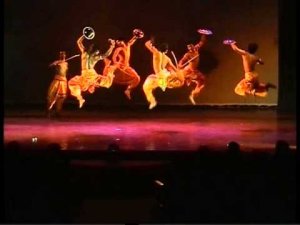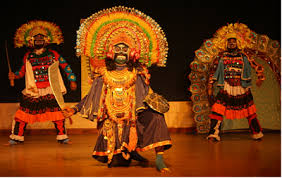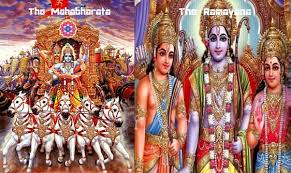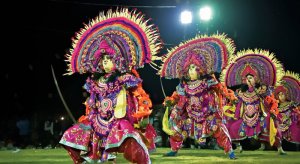Treditional Chhau Dance Orissa
Chhau dance which is also spelled as chau or chaauu, is a tribal dance form which is a mixture of dance with martial arts. Chhau is a popular dance form in the eastern part of India. Chhau dance is performed in three styles, named after the place where it was originated or evolved.
The Chhau dance of Orissa is known is the Mayurbhanj Chhau. Chhau dance is also famous in Jharkhand and Bengal where they are known as Seraikella chhau and Purulia chhau respectively. The costumes wore in the chhau dances are different for different forms of chhau, but the story depicted by all types of chhau dances are almost the same.
The story depicted by chhau dance is generally from Hindu epics, the Ramayana and the Mahabharata. This dance form is generally performed during the spring seasons and it brings all the people of every socio-economic background together.
Orissa has its special type of chhau dance which is called the Mayurbhanj chhau. It is named after the Mayurbhanj district of Orissa from where this dance form was originated. The costumes wore is Mayurbhanj chhau are very colorful.
The costumes are different for different types of the role played in the Mayurbhanj chhau. The artists playing the role of Gods and Kings generally wears pajamas in deep green or red or yellow shade whereas the artists playing the role of demons and monsters wears trousers of black shades.

History of Treditional Chhau Dance in Orissa-
Mayurbhanj chhau, the chhau dance form of Orissa has a long history. It’s a tribal dance form that originated in the dense forests of Mayurbhanj in the 18th century. It, later on, evolved with the martial arts in the 19th century. It grew under the royal patronage.
The Bhanja rulers were great patrons of art and culture. Under the patronage of the rulers of Mayurbhanj, Chhau dance was systematically organized and flourished into a better form and was performed by the artists in a disciplined manner.
Theme of Chhau Dance
Chhau dance is based upon the stories of Hindu epics like Mahabharata and Ramayana. Many mythological stories are also depicted by the chhau dance. Stories of Vedas and Puranas are also depicted by the chhau dance.
Chhau dance is generally performed in groups, however many times solo and duet chhau dances are also presented.
In the last of every chhau dance, the evil powers depicted in the dance are punished and the righteous triumphs. Two types of rasa are dominant in the chhau dance, the Vira Rasa and the Raudra rasa.
Music of Treditional Chhau Dance
Most of the music performed in the chhau dance is traditional or folk music which is popular among the locals of that region. The music is generally played on traditional instruments like Mahuri. Drums are an important part of chhau dance.
Drums are played before the dance to invite and welcome Lord Ganesha. Dhol and Dhamsa are other instruments that are played during the chhau dance.
A lot of songs from the epics like Ramayana and the Mahabharata are also played. Music is an integral part of the whole Chhau dance performance.

Performance of Treditional Chhau Dance Orissa-
Chhau dance is generally performed in the spring seasons in open spaces or ground fields during the night. It is a ritual that the dancers must take a bath before the dance. This is due to the belief that they must have to be sacred and clean before performing as a god.
In many events, the chhau dance is performed on the stages, but traditionally this dance is performed in the open spaces between 5 mashals (which are there for providing light). Masks wore by the dancers in the Chhau dance are made up of paper and clay.
Different masks show different types of facial expression like in anger, in sadness, in happiness, etc.
Jumping in the air is an important movement of the chhau dance. This dance originated as a dance form which contained some of the martial arts movement, but with the passage of time, it has gained a lot of religious sentiments and mythological dimensions.
Conclusion of Chhau Dance
Chhau originated as a tribal dance form but now is popular throughout the nation as a distinct dance form. The chhau dance is very close to religious dimensions as the theme of the dance is based on Hindu epics – the Mahabharata and the Ramayana.
But the most important thing about this dance is that it is enjoyed by peoples belonging to every socio-economic no matter they belong to which religion or which cast or are rich or poor. So chhau dance also acts as a social bond between different peoples in the society.
The music in chhau dance is generally the folk music popular in that region which completely makes it as a popular folk dance. Thus chhau dance is not only a dance form but now has become as an integral part of the rich culture of India.




